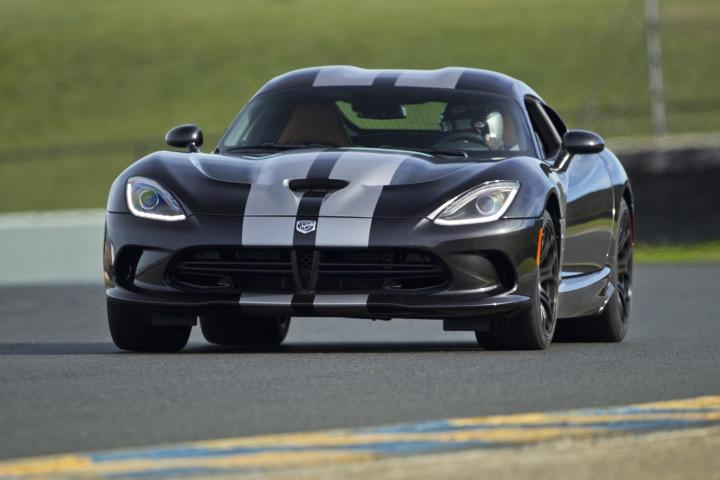
Dodge’s prodigal son may soon return home.
As part of a new five-year plan, Fiat-Chrysler announced that it will integrate the Dodge and SRT brands, meaning the Viper – which has worn an SRT badge since its 2012 relaunch – could become a Dodge again.
As part of Chrysler’s post-financial crisis restructuring Dodge was shorn of its profitable Ram trucks, while the scope of SRT was greatly expanded.
The SRT brand, short for Street and Racing Technology started out as an in-house tuner inspired by BMW M and Mercedes-Benz AMG, has been in charge of all Chrysler performance cars for the past two years.
Under the new scheme, though, Dodge will become Chrysler’s performance brand, while Chrysler itself takes over as the company’s mainstream Ford-Chevrolet-Toyota fighter.
The move should make Dodge relevant again.
In recent years, the 100-year-old brand has leaned heavily on the sporty Charger and Challenger while its more mainstream models have been left to wither.
While it did replace the Caliber with the vastly-improved Dart, the only thing the rest of the lineup seems to be good for is threatening the sales of similar Chrysler-badged models.
That means the Dodge Avenger and Grand Caravan will likely be killed off, although Motor Authority reports that the Dart and Journey will stick around, and even get performance versions with turbocharged engines and all-wheel drive.
The fates of the non-Dodge SRT models – the Chrysler 300 SRT and Jeep Grand Cherokee SRT – are unknown, though.
Chrysler and Jeep may lose a couple of hot rods, but Dodge dealers will gain a lot in return. The Viper’s switch to SRT always seemed a bit forced, and lessened the “halo effect” that was one of the most valuable aspects of the car for its maker.
Now, just as Chevrolet dealers can bask in Corvette buzz, Dodge stores will again benefit from some residual sports-car excitement.


